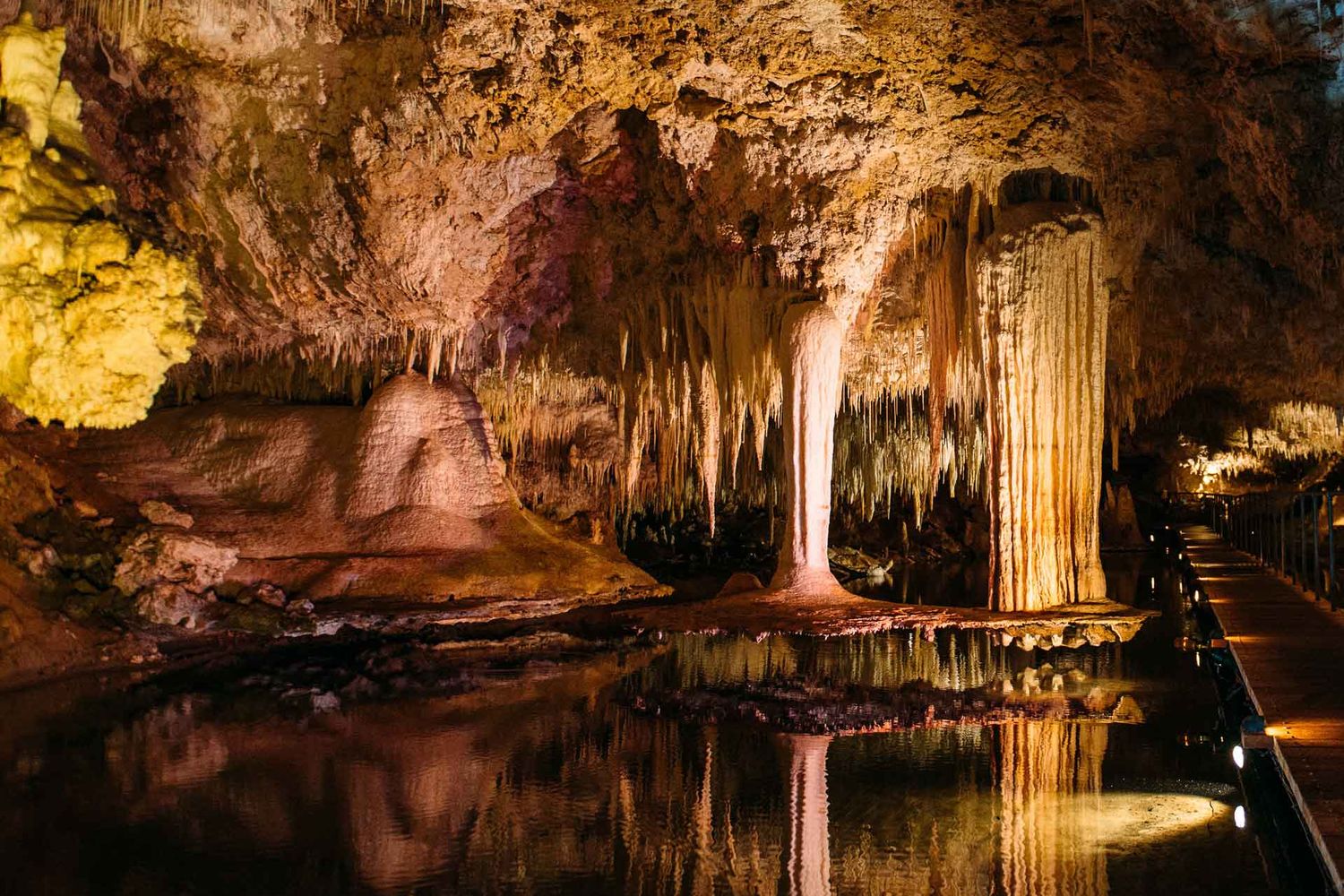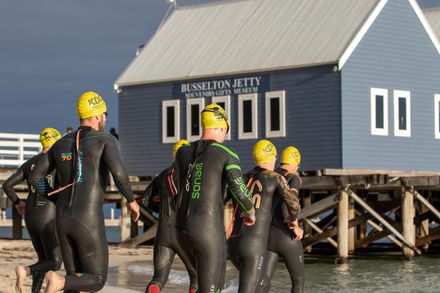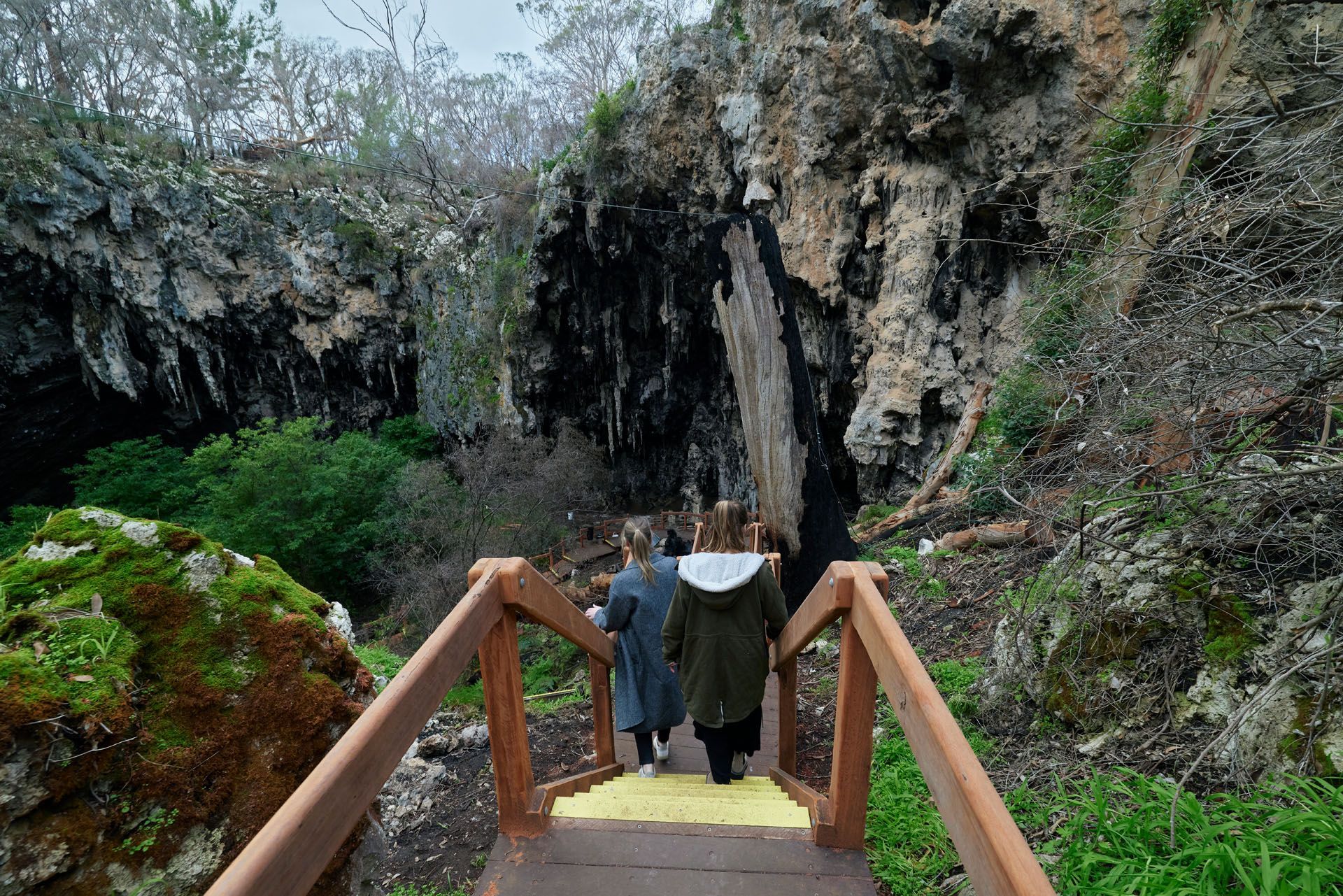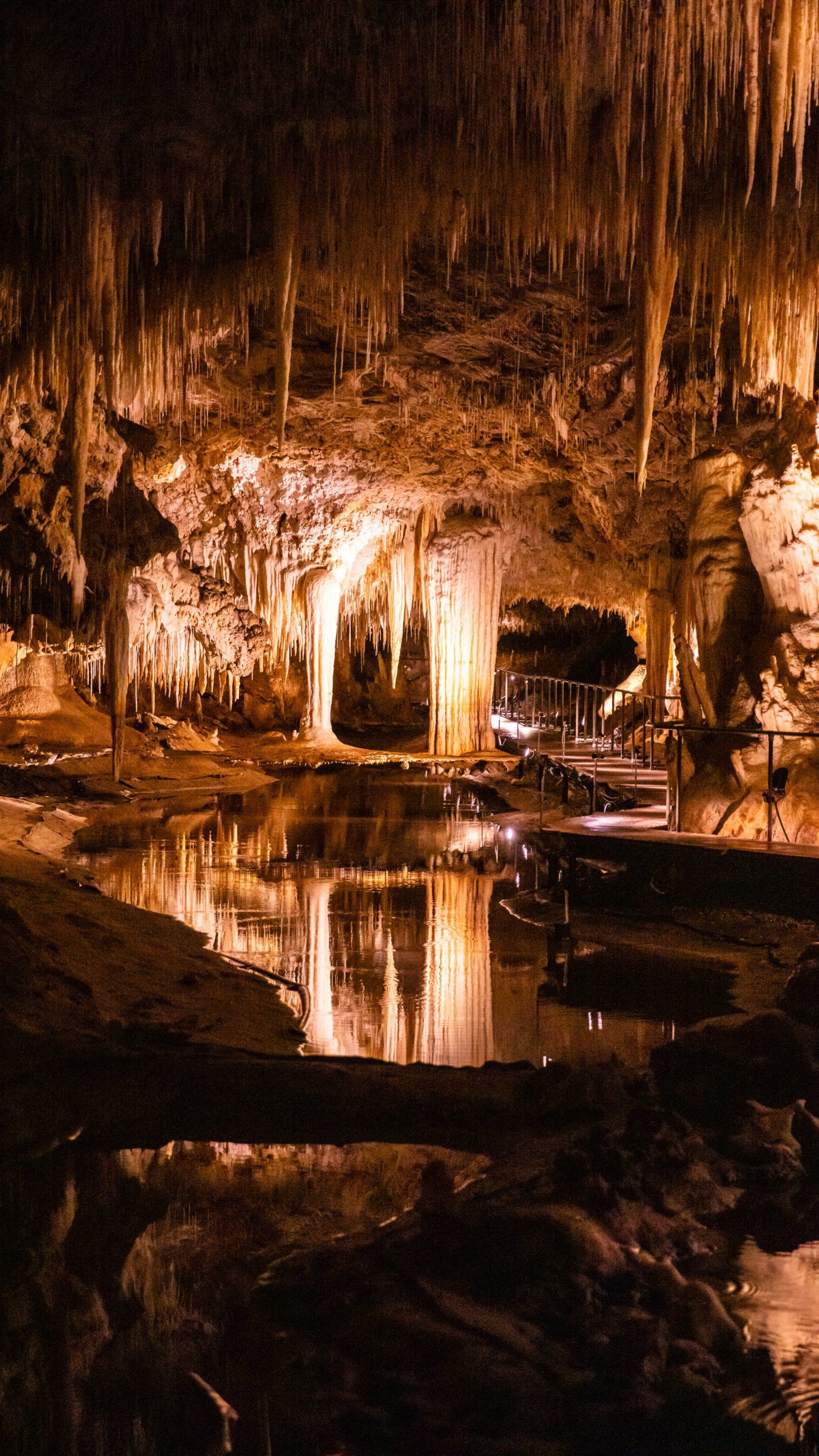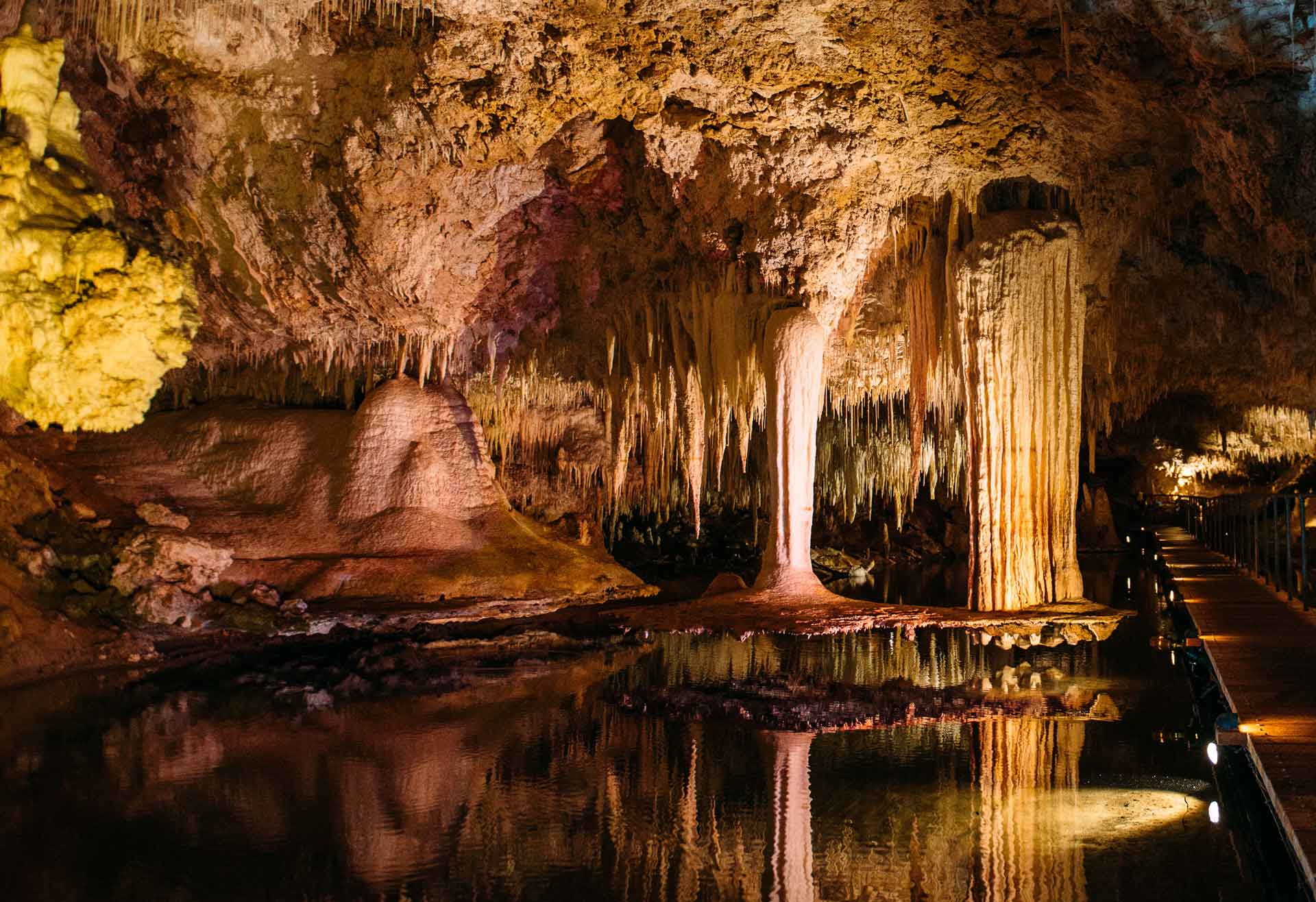In the early 1900s, people shimmied down a 400 year old Grandma Karri to get down to Lake Cave.
Today there are stairs and viewing platforms, which descend through the natural beauty of the doline, down to the small cave entrance.
The doline used to be a giant cavern. Then the ceiling collapsed and created an incredible sunken forest, laden with ferns, karris and wildflowers. It’s breathtaking, which is also how you’ll feel climbing the 325 stairs to the surface.
The suspended deck is the best spot to admire the sunken forest. The view takes in the magnificent doline, which is probably why people choose the spot to get married, and to celebrate other special occasions.
Note: In late 2021 there was a significant bushfire in the National Park, which resulted in damage to the cave access infrastructure. Luckily the cave was left intact, and after months of hard work by the specialist in-house team the cave is once again open to the public for tours. There is still some construction work to be completed, and this will take place over the next few months. In the meantime, visiting now is a great opportunity to witness the beautiful regrowth and regeneration of nature that occurs after a fire.
